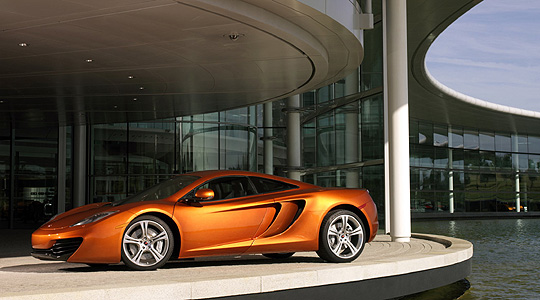
This is the one we’ve been waiting for: the first all-new McLaren road car, a mid-engined coupé powered by an in-house, twin-turbo 3.8-litre V8. It’s got the technology and, more to the point, it’s also got soul.
Where the Mercedes-Benz SLR McLaren was, let’s face it, a bit showy-off and glitzy – however impressive its technology – the new MP4-12C oozes class. McLaren describes it as bringing “technology and performance exclusive to this ‘ultimate’ sector [Zonda, Enzo, etc.] into the ‘core’ segment [F430, DB9, 911 Turbo et al].”
The car, the “first in a range of high performance sports cars from the home of the world’s most successful racing car company”, is expected to cost in the region of £165,000. It will go on sale via a dedicated worldwide dealer network in early 2011, with sales (around 1000 per annum) expected to be split 25 per cent UK, 25 per cent USA, and the balance spread across mainland Western Europe, the Middle East and the Far East.
“First in the range...” sounds good, doesn’t it? So there’s clearly more to come.
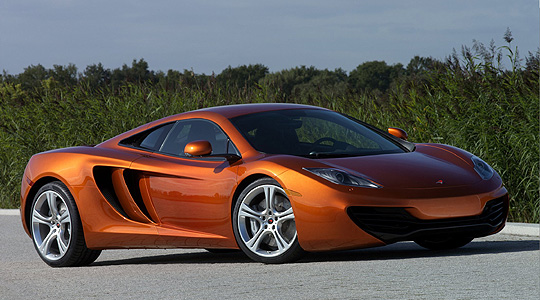
The name is derived from ‘MP4’, the standard chassis nomenclature from McLaren since 1981, ‘12’ being its ‘Internal Vehicle Performance Index’ figure in McLaren-speak (a slightly bizarre, Spinal Tap moment, perhaps – is there a ‘10’?) and ‘C’ for carbonfibre. Nigel Tufnel aside, the ‘C’ is the really interesting bit as it shows how important carbon composite material is to the new car.
The Carbon MonoCell is the key structure in the MP4-12C. It’s a lightweight (just 80kg) one-piece, moulded carbonfibre cell that acts as the car’s ‘heart’. Because of its extreme strength and low weight, it allows the car to be a much more compact package than equivalent supercars. The alloy front suspension bolts directly to the front of the Carbon MonoCell, in true Formula 1 style.
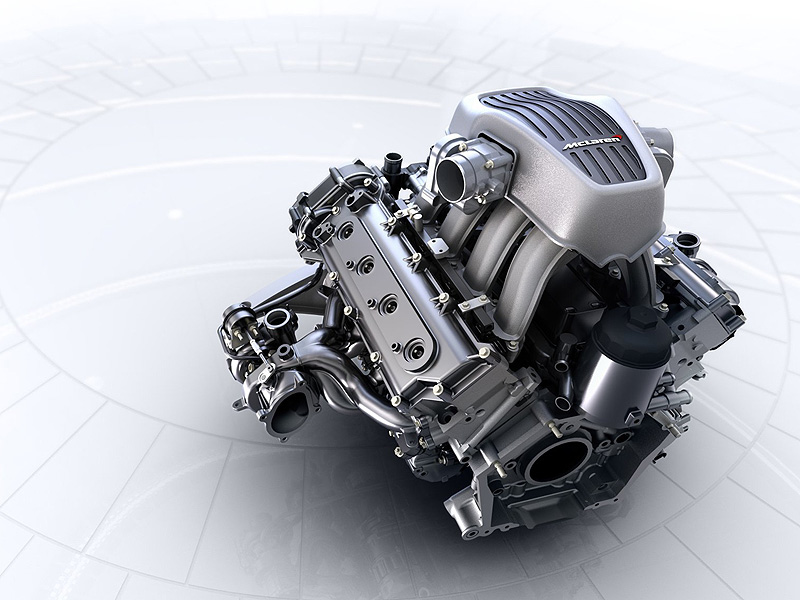
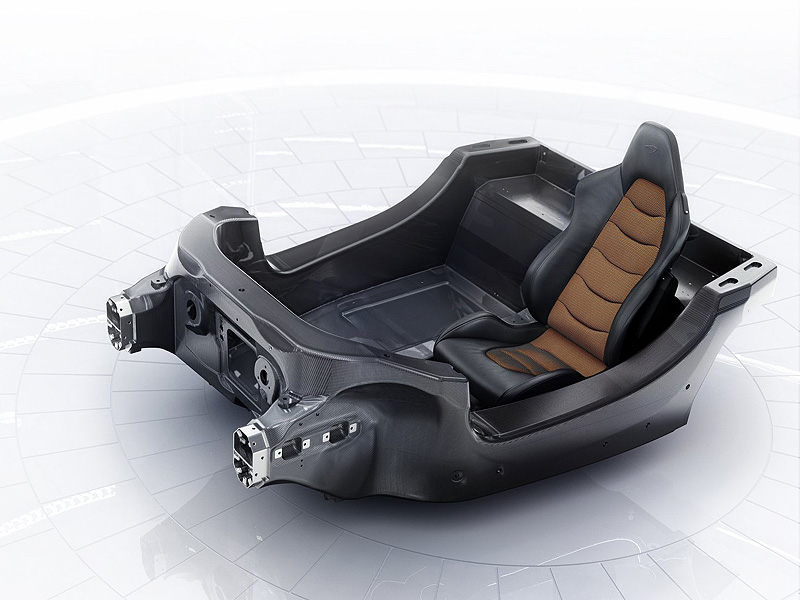
Powering the car is a twin-turbocharged, 3.8-litre 90° V8 engine (redlined at 8500rpm) developed entirely by McLaren, one that will produce 600bhp and 600Nm torque. 80 per cent of the latter is available below 2000rpm, so it’s extremely flexible as well as more powerful than the recently announced Ferrari 458 Italia.
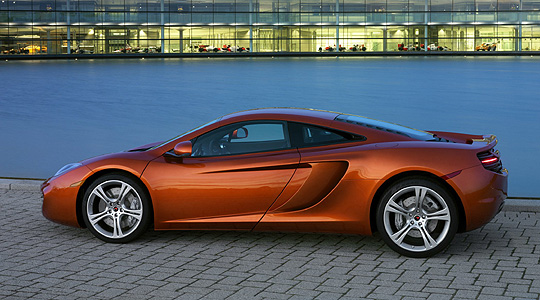
Its environmental credentials are good, too, as from a horsepower to CO2 ratio, the 12C delivers its power at greater efficiency than any other internal combustion engine car on the market, including hybrids.
Power and torque are delivered to the rear wheels through two wet clutches and a McLaren-developed seven speed Seamless Shift dual clutch gearbox (SSG). The steering wheel-mounted paddles have a feature known as ‘Pre-Cog’. This stands for ‘pre-cognition’ and means that a driver can just slightly pull on the paddle — in the manner that a camera pre-focuses on the first push of the shutter — to have the gearbox in a heightened state of alert for the imminent change. In practical terms this reduces the time for changes to zero.
The car’s low weight, extreme stiffness and Proactive Chassis Control (active suspension) mean that the handling will be sublime – without a very hard ride. McLaren expects the car to offer “class-leading ride comfort and class-leading performance”.
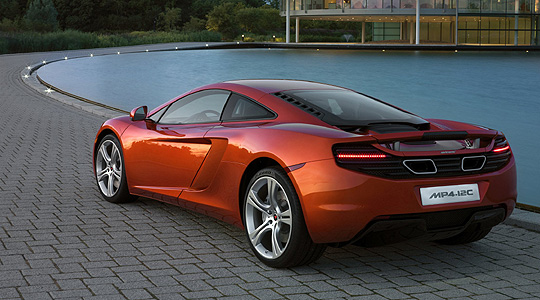
Cast alloy wheels (19in front, 20in rear) are fitted with Pirelli tyres specially developed for the MP4-12C. Brakes, unusually, are steel with forged aluminium bells as standard. Carbon composite discs will be an option, but are heavier than steel and therefore go against the extreme weight-saving ethos of the new car. Additional braking at very high speed is provided by the moveable rear airbrake.
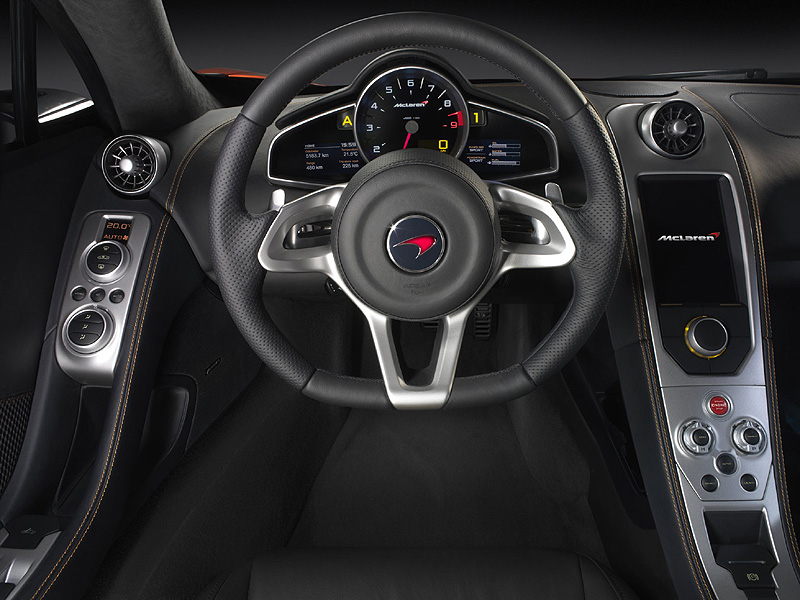
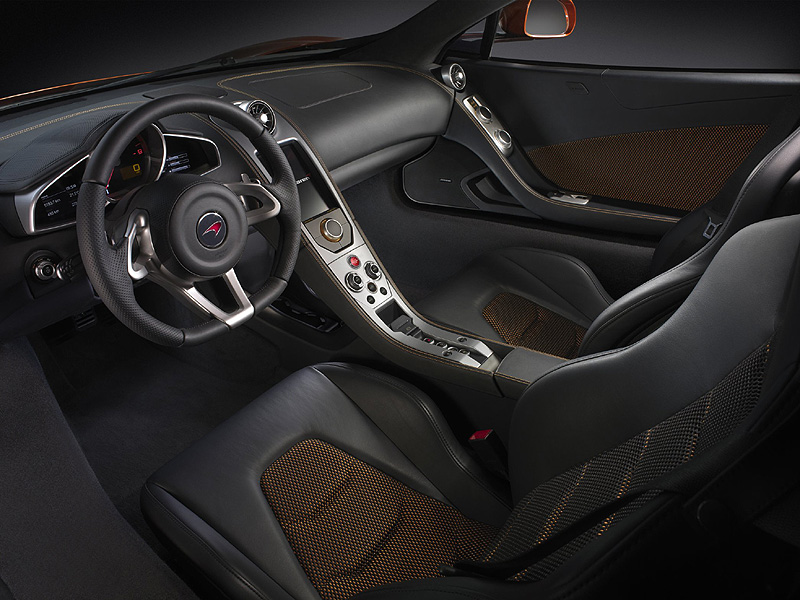
The functional but beautifully finished interior contains no parts from other cars; every component is special to the MP4-12C. Like the original McLaren F1, many controls have been moved to the most ergonomic positions, such as the armrests of the doors.
From a styling point of view, the shape is attractive and compact with ‘functionality’ writ large. Every scoop, vent and spoiler is there for a reason and not a millimetre too big. It is also compact, with excellent visibility – almost unheard of in this segment – allowing for comfortable town driving and super-precise placement on the road.
Frank Stephenson, McLaren Automotive Design Director, stated: “Many sports cars and supercars present an ‘in-your-face’, ‘look-at-me’ image that can become wearing and boorish; the ultimate backhanded compliment becomes, '…it was of its time'. Great design, however, is timeless and looks relevant years later. Take the McLaren F1 as an example. I hope that with the 12C we have produced a car that looks great today and will still look great in years to come.”
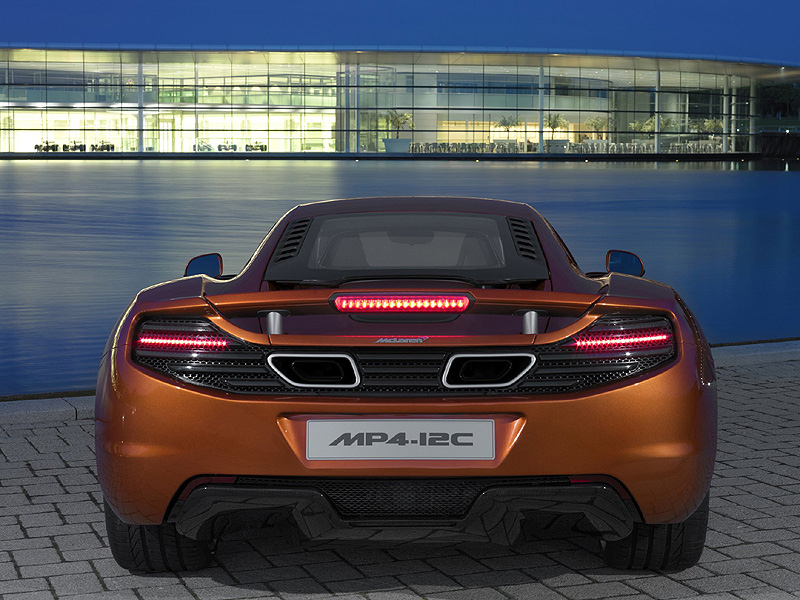
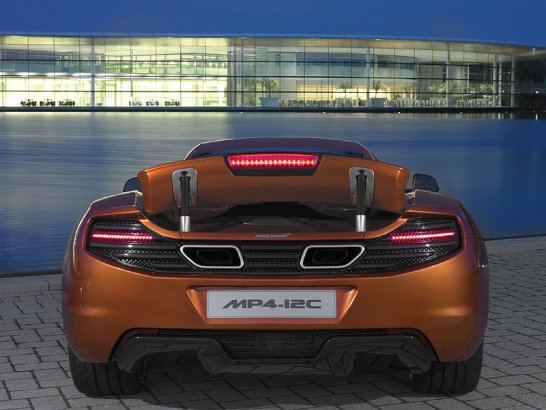
The biggest hint from the McLaren F1 is at the rear, with a sloping ‘glasshouse’ engine cover and slightly pushed-forward rear lights. Like the older car, it also has dihedral-opening doors and the aforementioned airbrake.
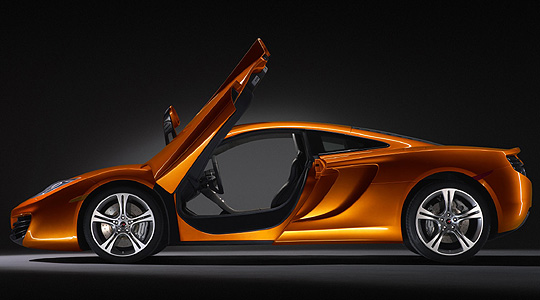
This is a very significant car and brings the British company back into the market for proper, unpretentious sports cars with almost unparalleled levels of technical ability and a high-quality, Formula 1-level finish.
What’s more, despite the sometimes clinical and unemotional demeanour of the company in the media, you can tell from the way this car has been designed and presented that the people there really care, and are as keen to beat Ferrari in the showroom as they are on the track.
We think it's great.
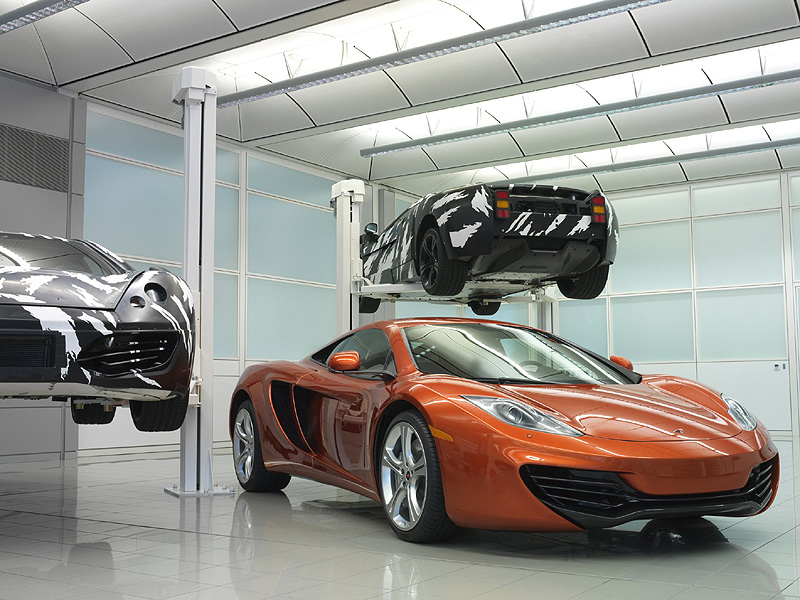
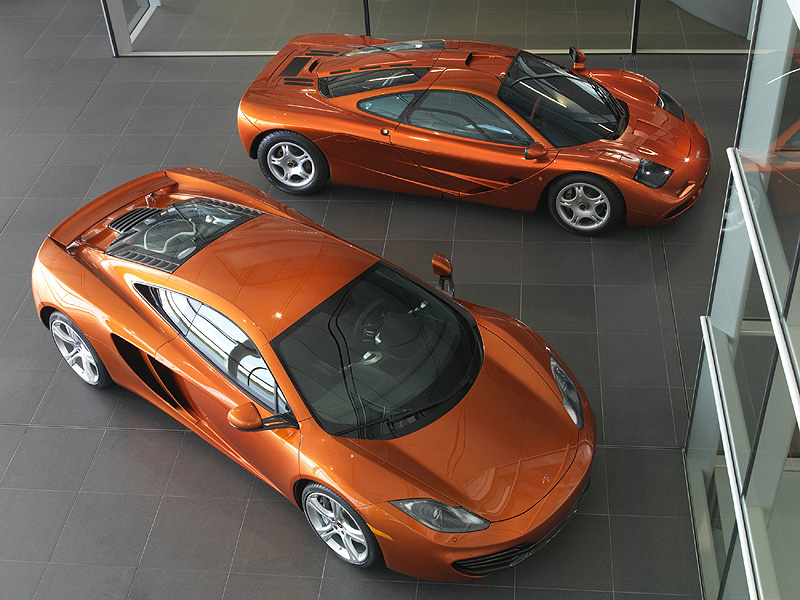
Text: Steve Wakefield
Photos: McLaren Automotive
ClassicInside - The Classic Driver Newsletter
Free Subscription!













